Samsung HMD Odyssey Windows Mixed Reality Headset Review: MR Goes Premium
Why you can trust Tom's Hardware
The Samsung HMD Odyssey Motion Controllers
Microsoft created the reference design for the Windows Mixed Reality motion controllers, and it gave its hardware partners the freedom to improve the design as they saw fit. The company didn’t put much effort into creating a comfortable, durable controller. We suspect that Microsoft thought its partners would improve upon the base design, but for the most part that wasn’t the case. The vast majority of Microsoft’s partners stuck with the standard reference controller. Samsung is the only company that went the extra mile to create a unique controller design.
Samsung's Windows Mixed Reality motion controllers aren’t dramatically different from Microsoft’s controller design, but the changes that Samsung implemented make all the difference in the world. Samsung’s controllers still feature a thumbpad and a thumbstick, along with a trigger button, a grip button, a menu button, and a Windows button. The controllers also share a similar shape as its competitors, with a halo of LEDs attached to a controller handle. However, Samsung didn’t just rebrand a pair of reference controllers. The company picked up where Microsoft left off and built an impressive input device.
The Most Ergonomic Motion Controllers Yet
We’re not big fans of Microsoft’s standard Windows MR Motion controllers, which by extension means that we don’t care for the input devices that come with the Acer, Lenovo, HP, Dell, and Asus Windows MR headsets. However, Samsung’s controllers are in the running for the best on the market, period.
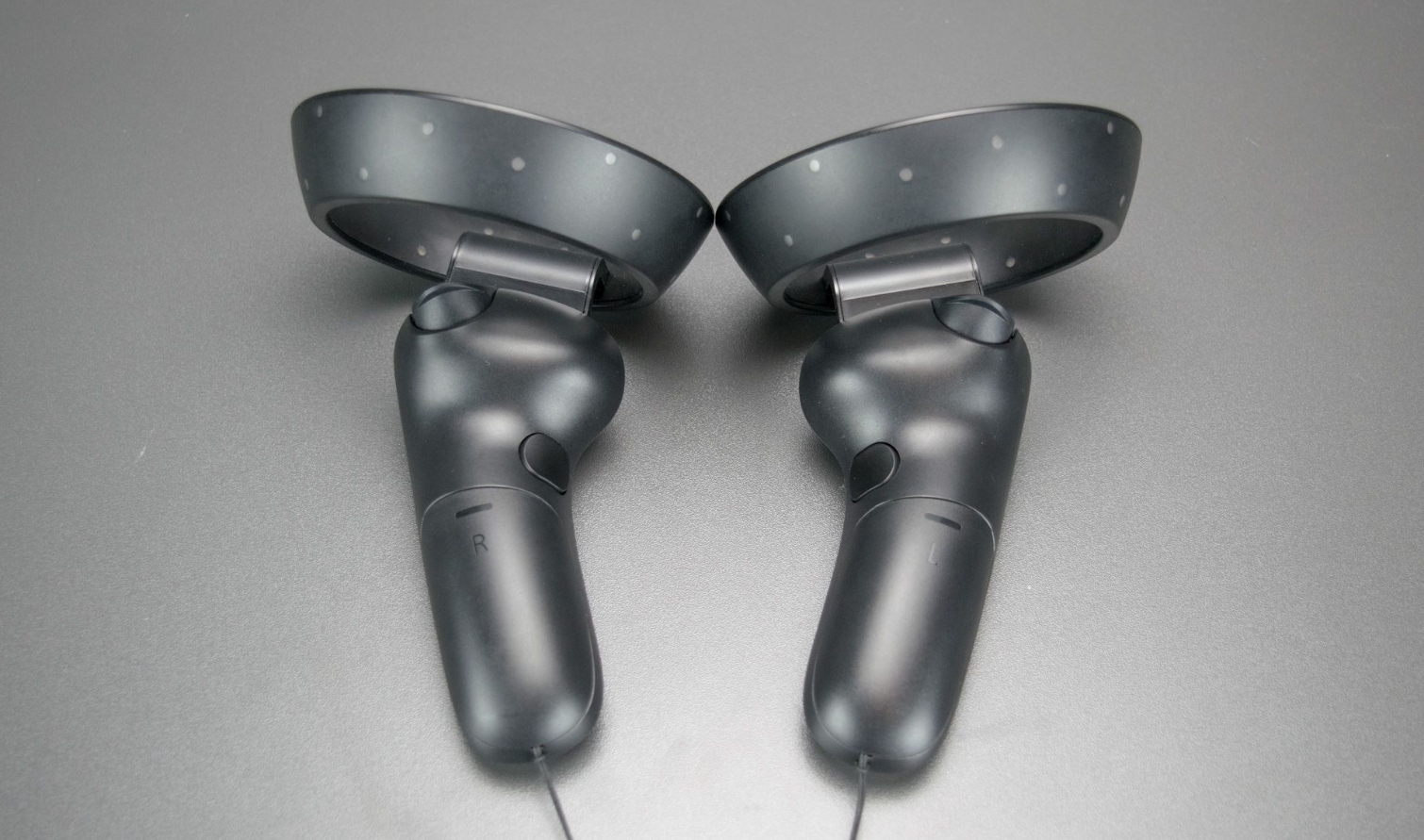

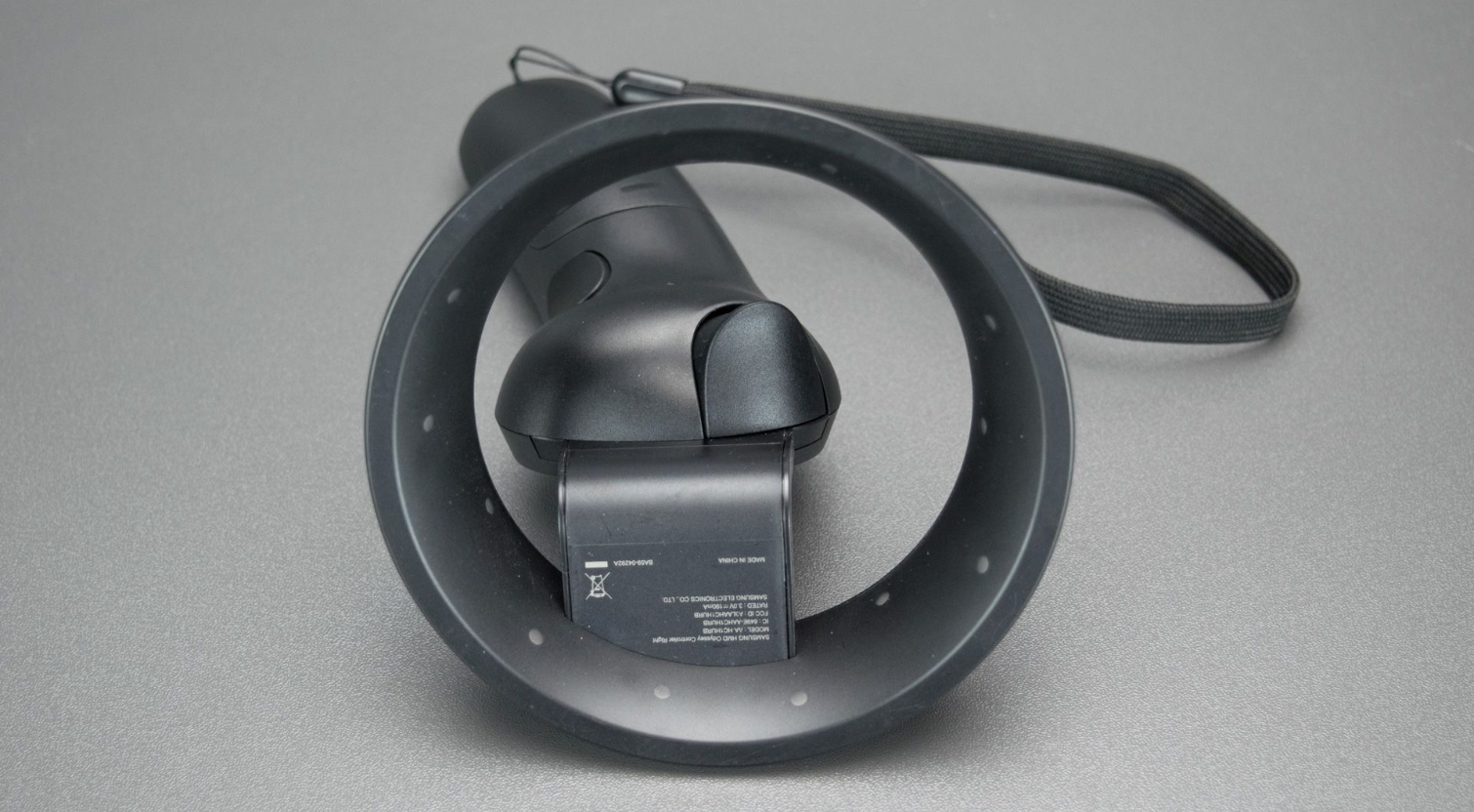

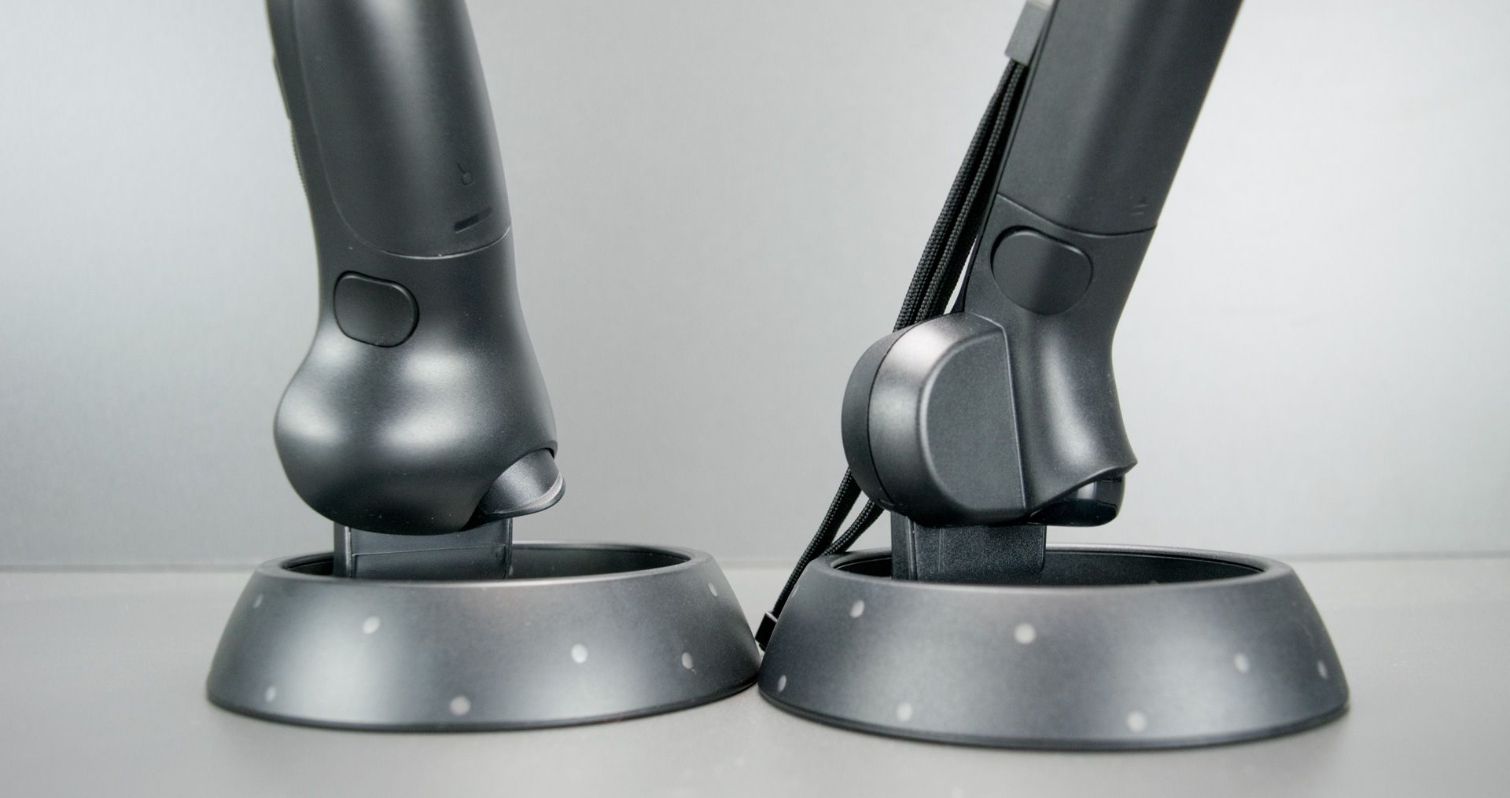
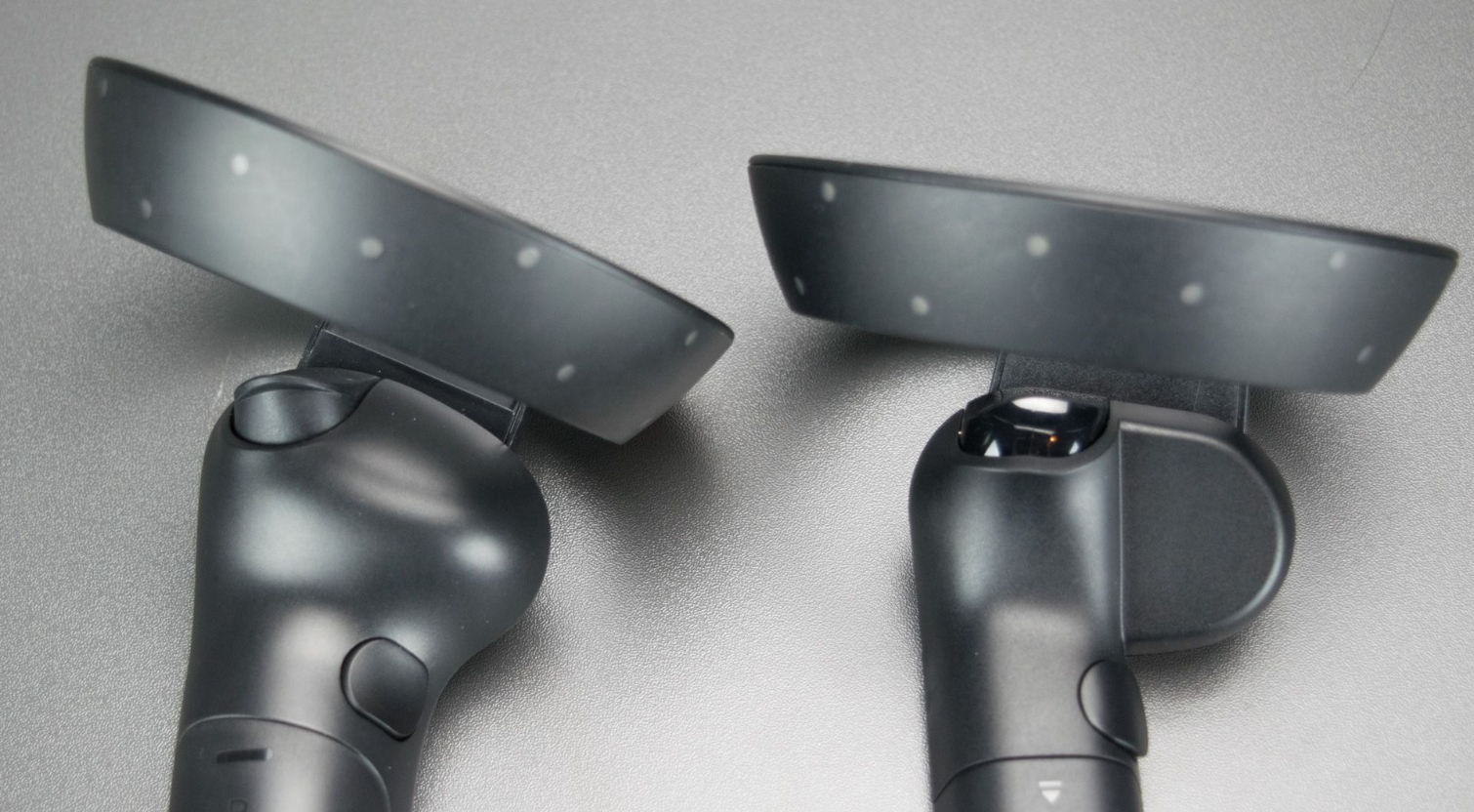

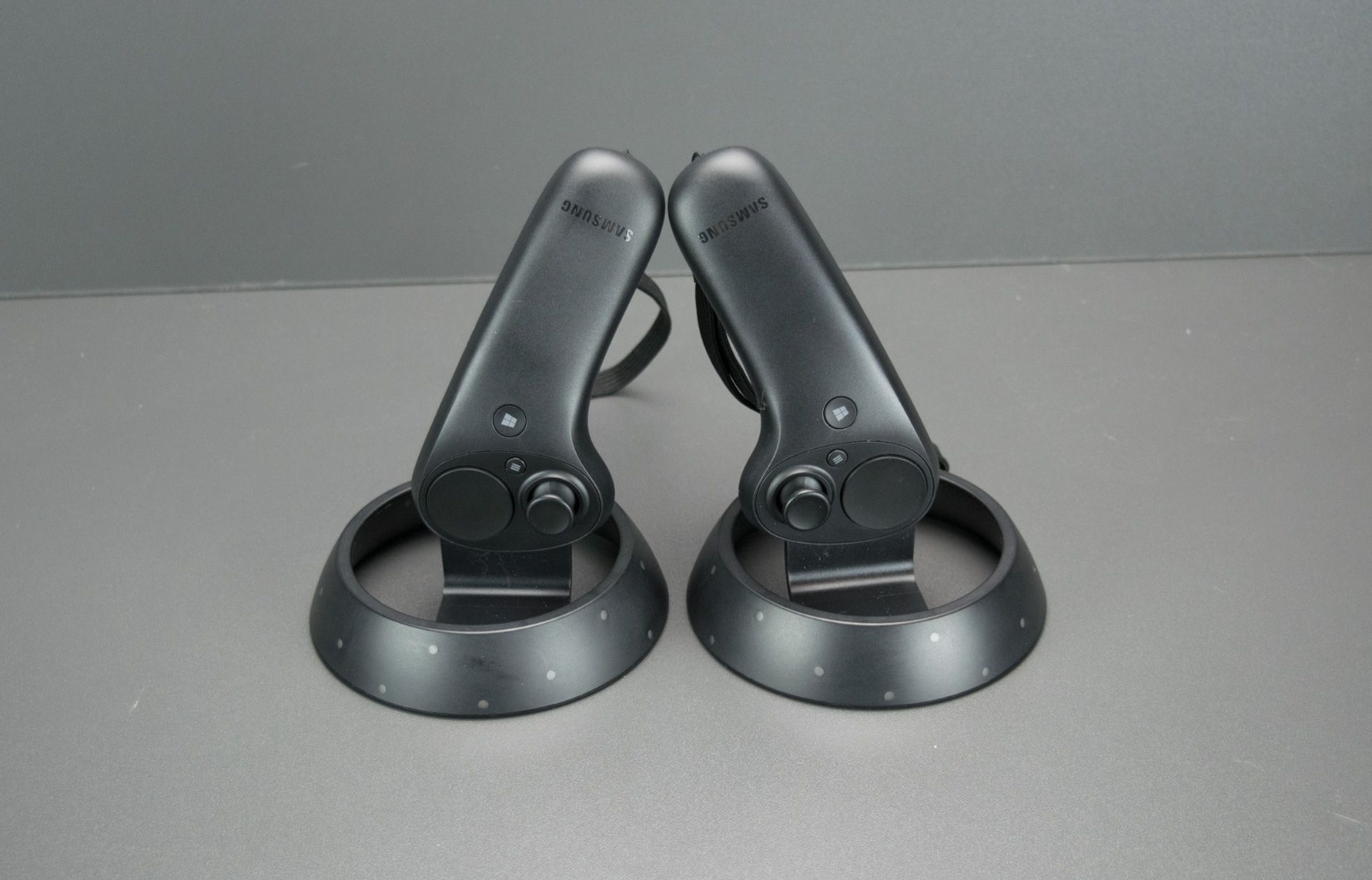


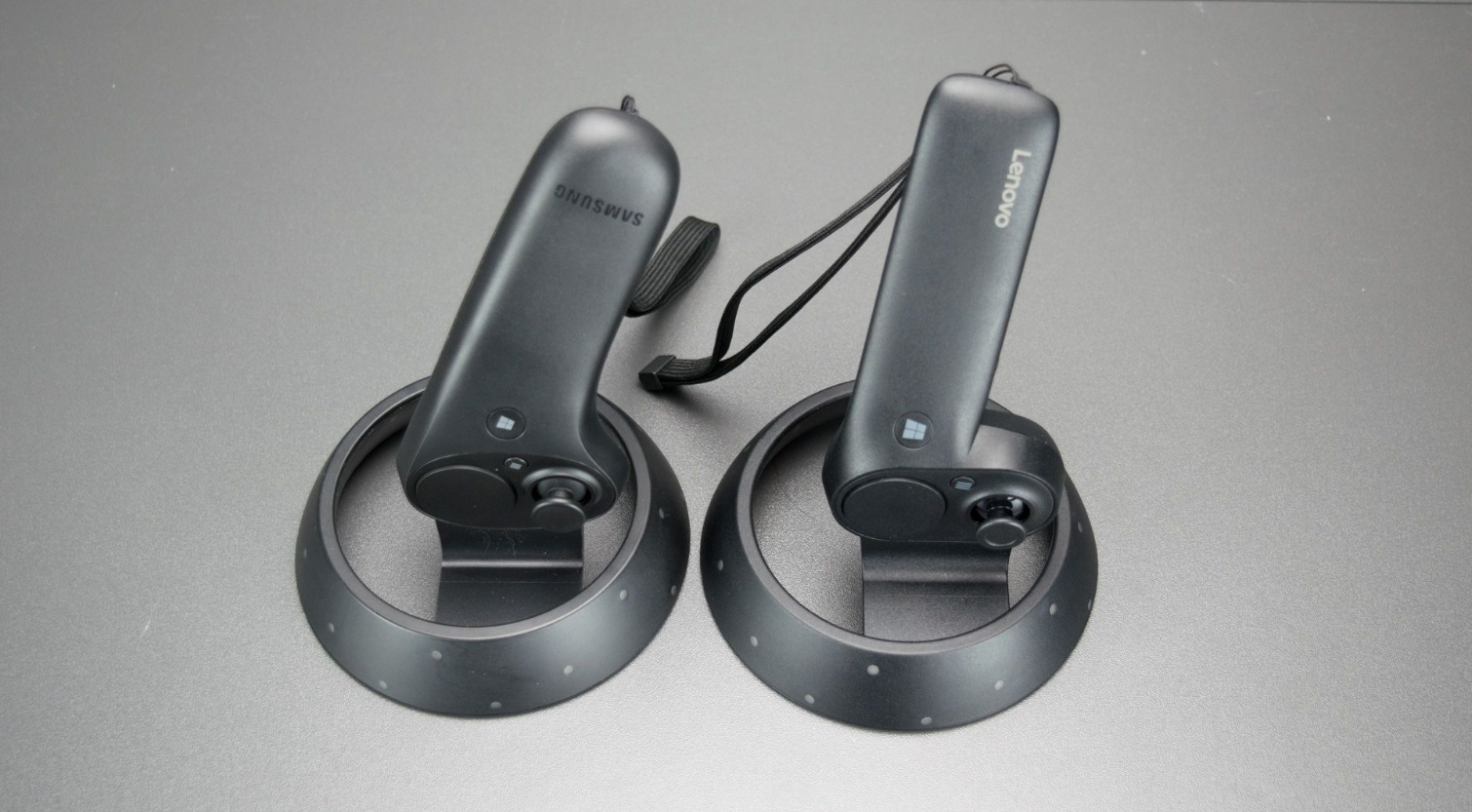




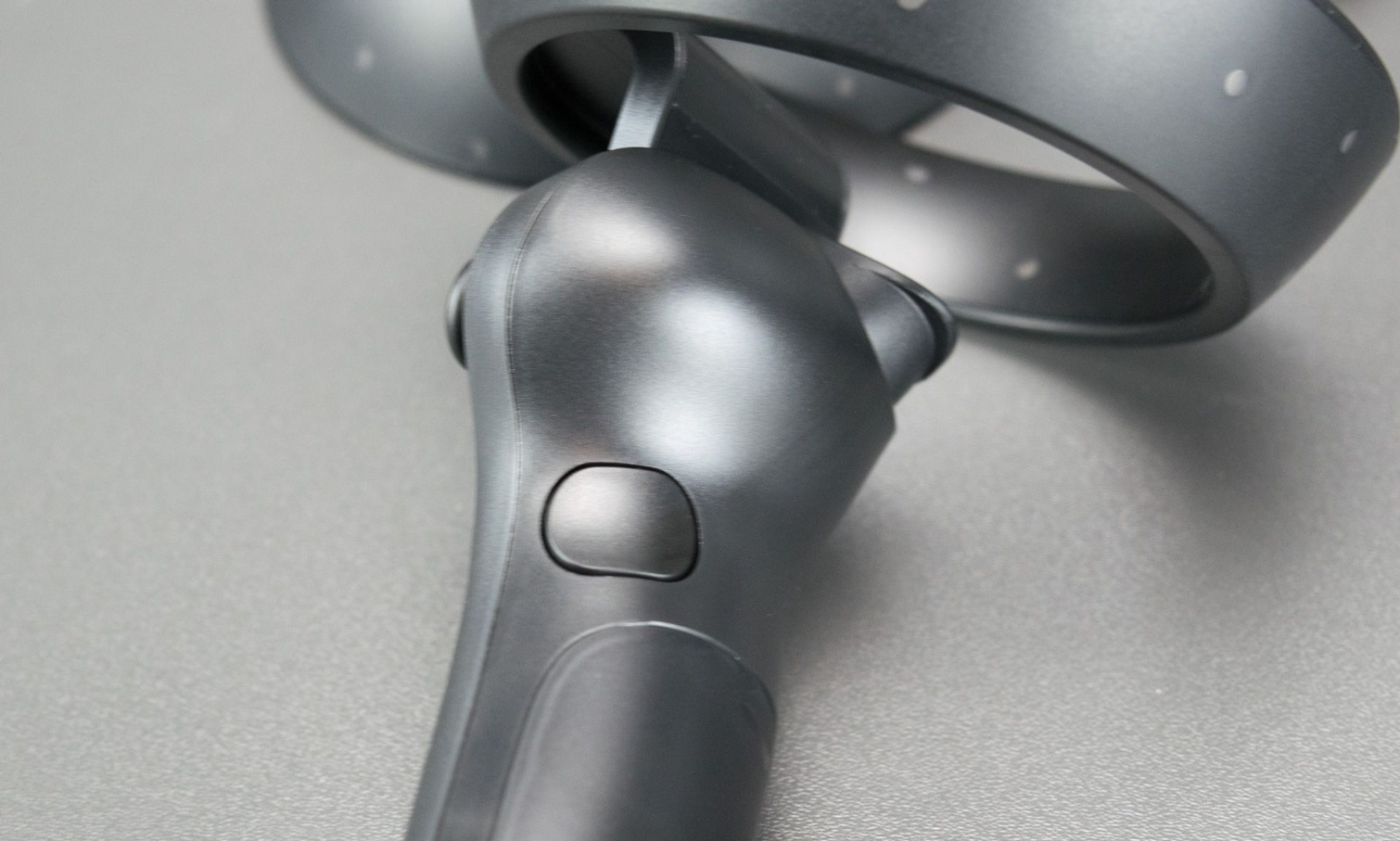
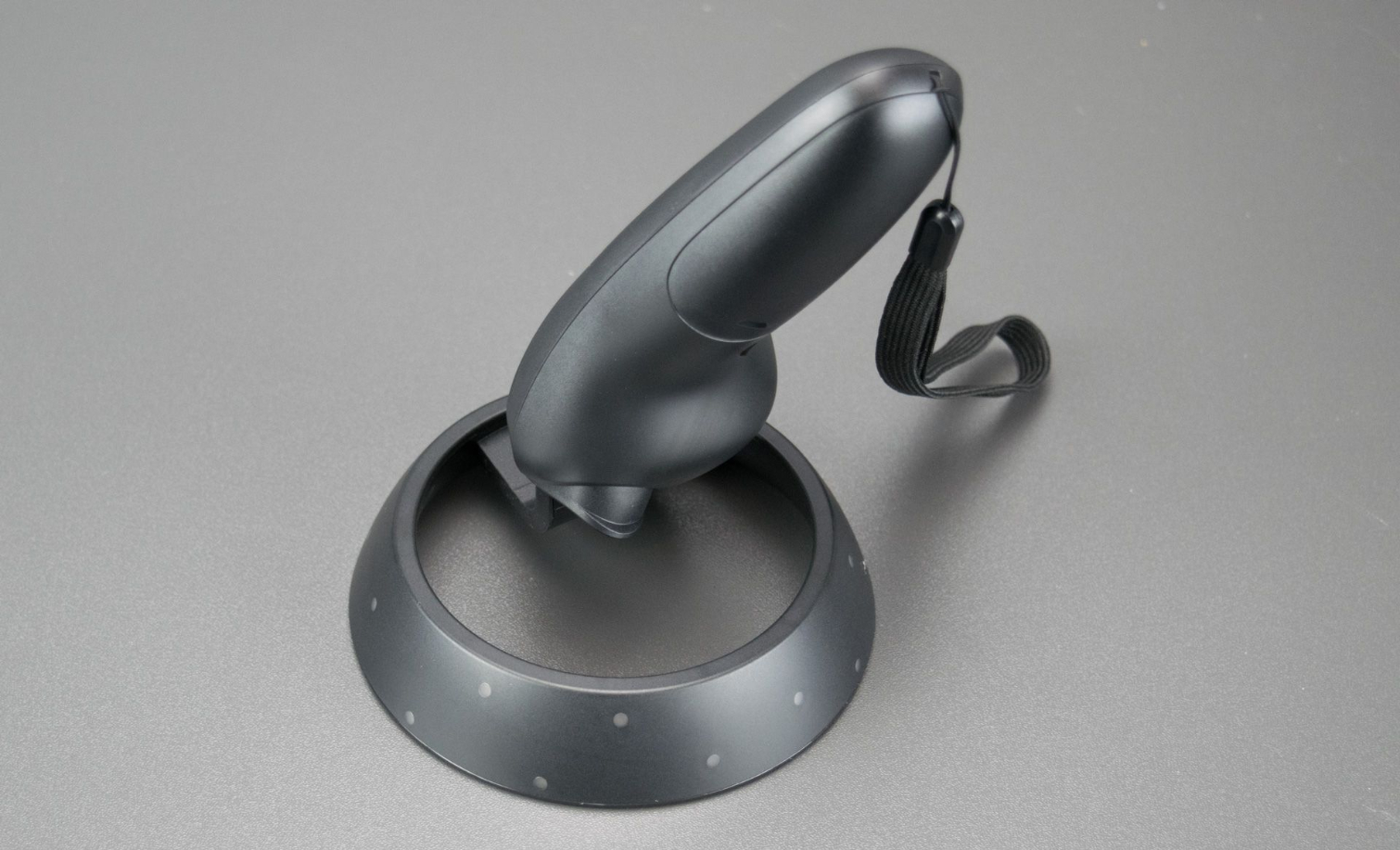
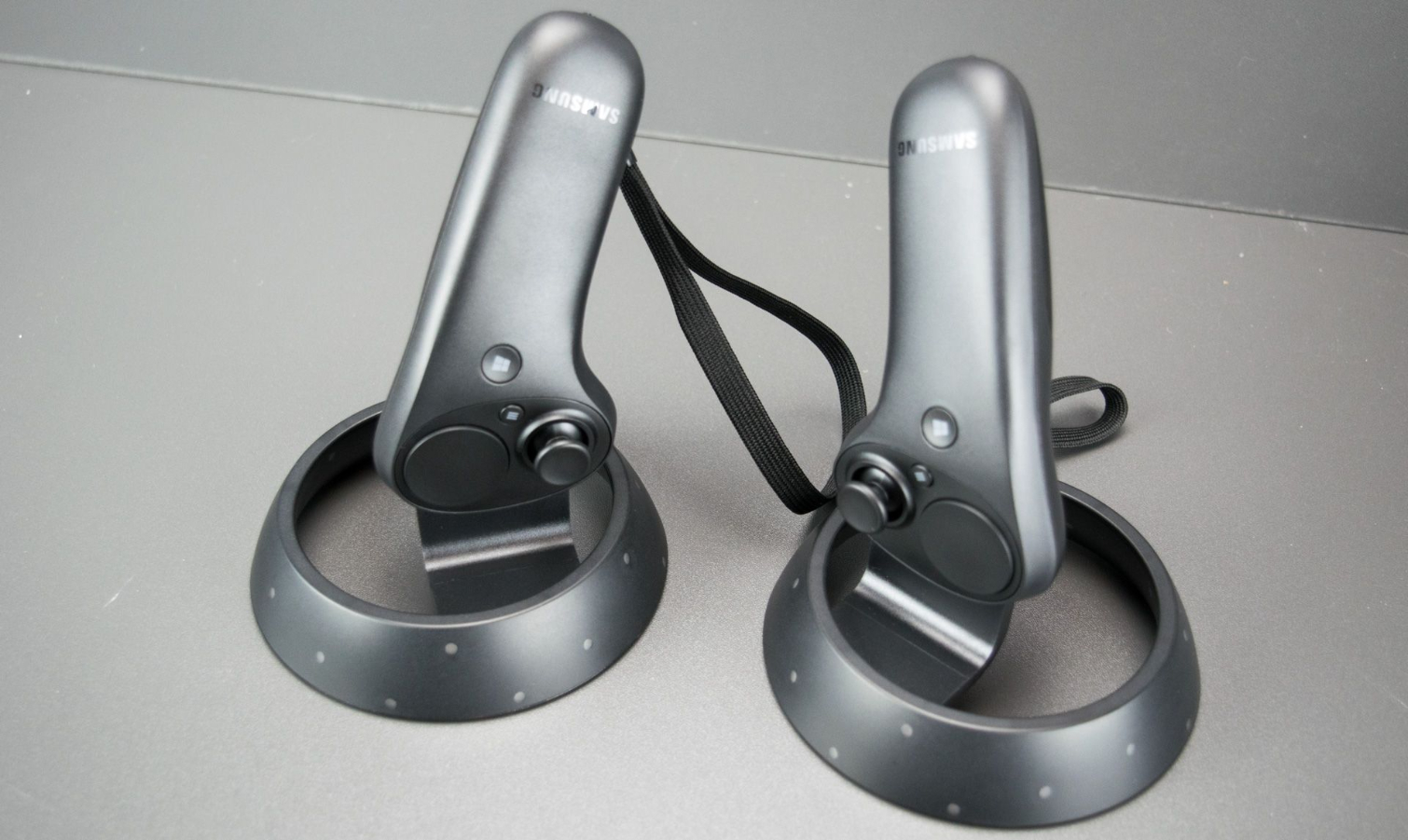
The shape of the handle is the first thing that we noticed about Samsung’s motion controllers. The handles on Microsoft’s reference controllers are somewhat square, which isn’t a comfortable shape to hold in your hand. Samsung’s controllers are much more ergonomically shaped. The handles feature soft, round edges, and the handle has more girth, which we found prevented the cramps that we encountered while using the standard Windows MR motion controllers. Many people praise the Oculus Touch controllers for thier ergonomic shape, but we've always had trouble using them for long periods without our hands cramping. Not so with the Samsung controllers. We used them for hours at a time without any discomfort.
Samsung also corrected the button layout of the standard controller to make its controllers more comfortable. Microsoft’s design features side-by-side thumbstick and trackpad, but we had a hard time reaching both without adjusting the position of our hand. Samsung added a slight bend to the top of the controller, which enabled it to offset the placement of the thumbstick and trackpad, to making them both easier to reach. The company also re-calibrated the position of the trigger and grip button so that you can reach every button from the natural grip position. The Windows button is the only one that we found slightly uncomfortable to reach, but we’d rather deal with a slight burden to press that button than find ourselves pressing it unintentionally on a regular basis.
When we were evaluating the Acer and Lenovo Windows Mixed Reality headsets, we noted that their controllers felt somewhat flimsy and potentially prone to breaking. We don’t have the same concerns about the Odyssey’s controllers, though. Samsung appears to have molded its motion controller with a stronger plastic than Microsoft dictates for its reference controllers, as they feel more robust. Samsung's controller doesn’t creak when we squeeze the handle, and the halo attachment is much sturdier on Samsung’s controllers than it is in Microsoft’s reference design. In short, the Odyssey wands feel like they can take a good pounding.
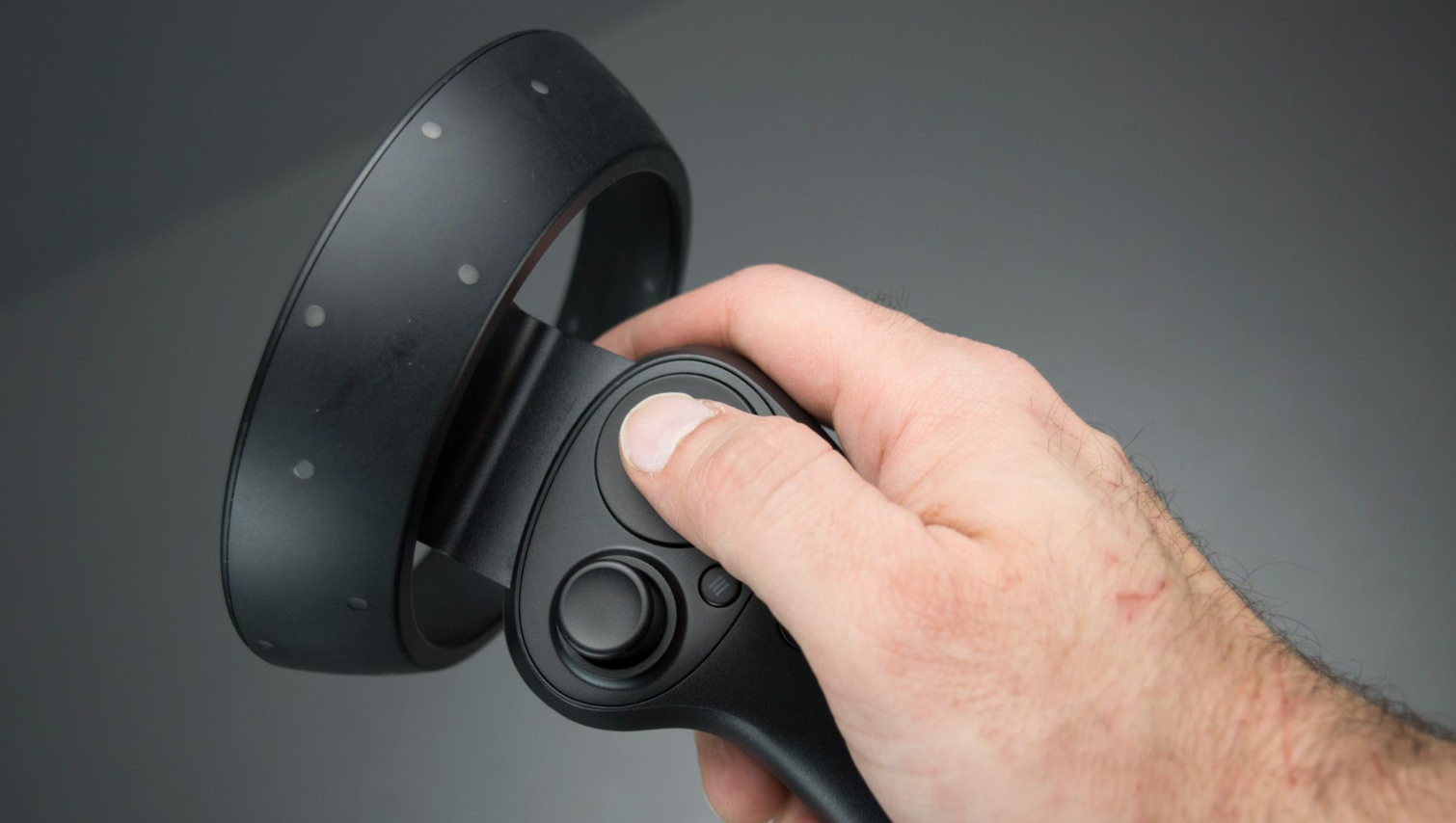


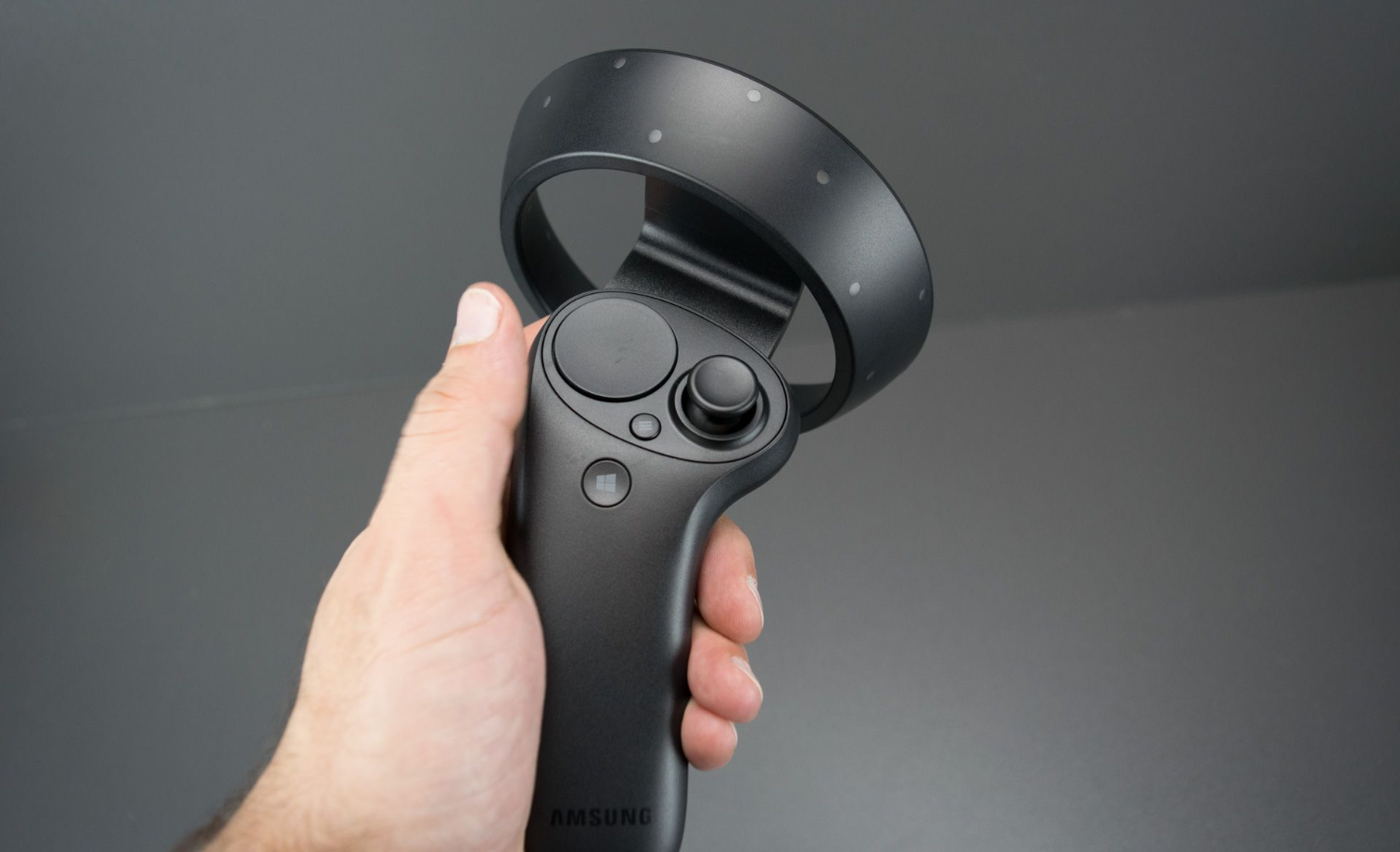
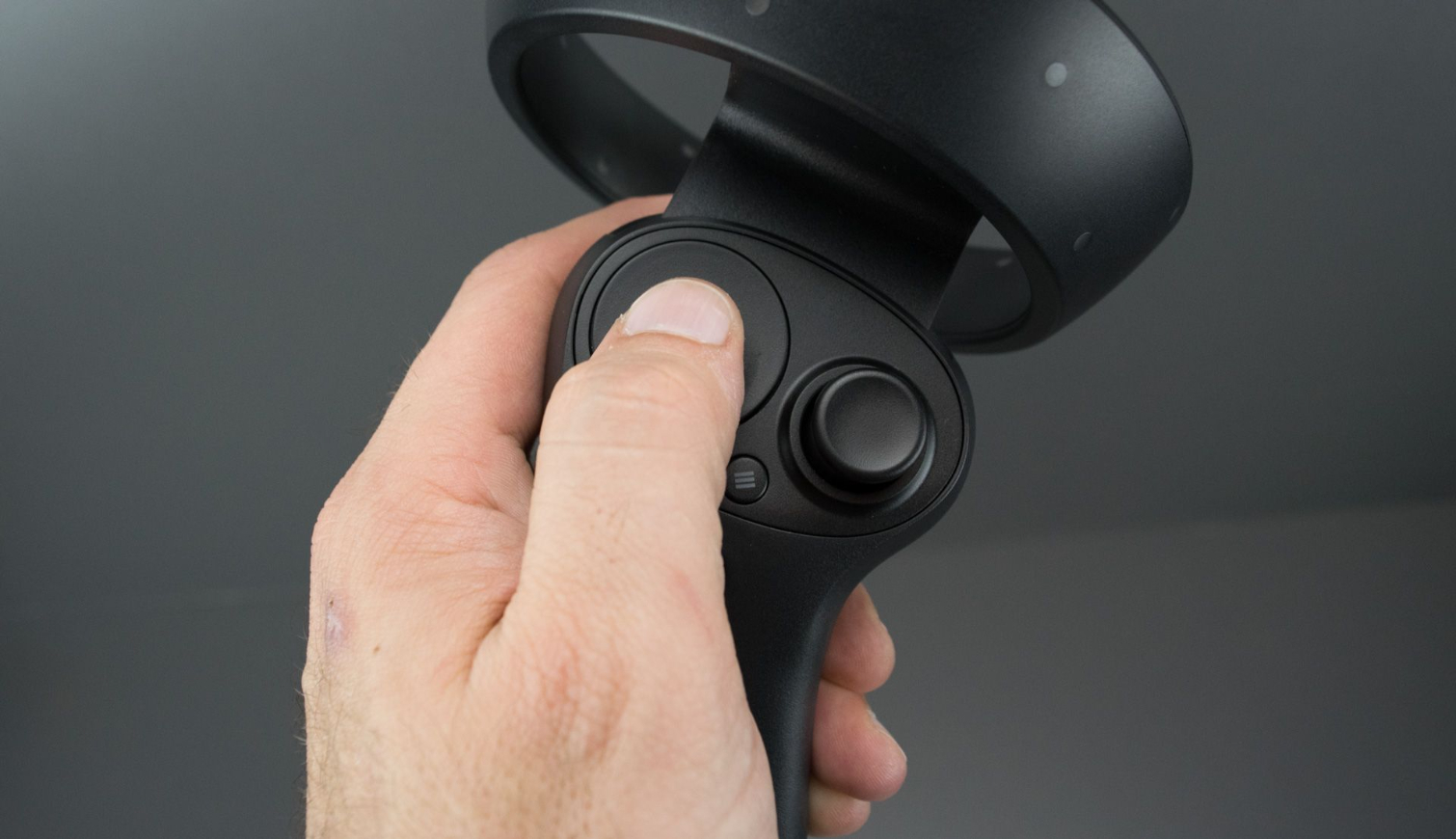
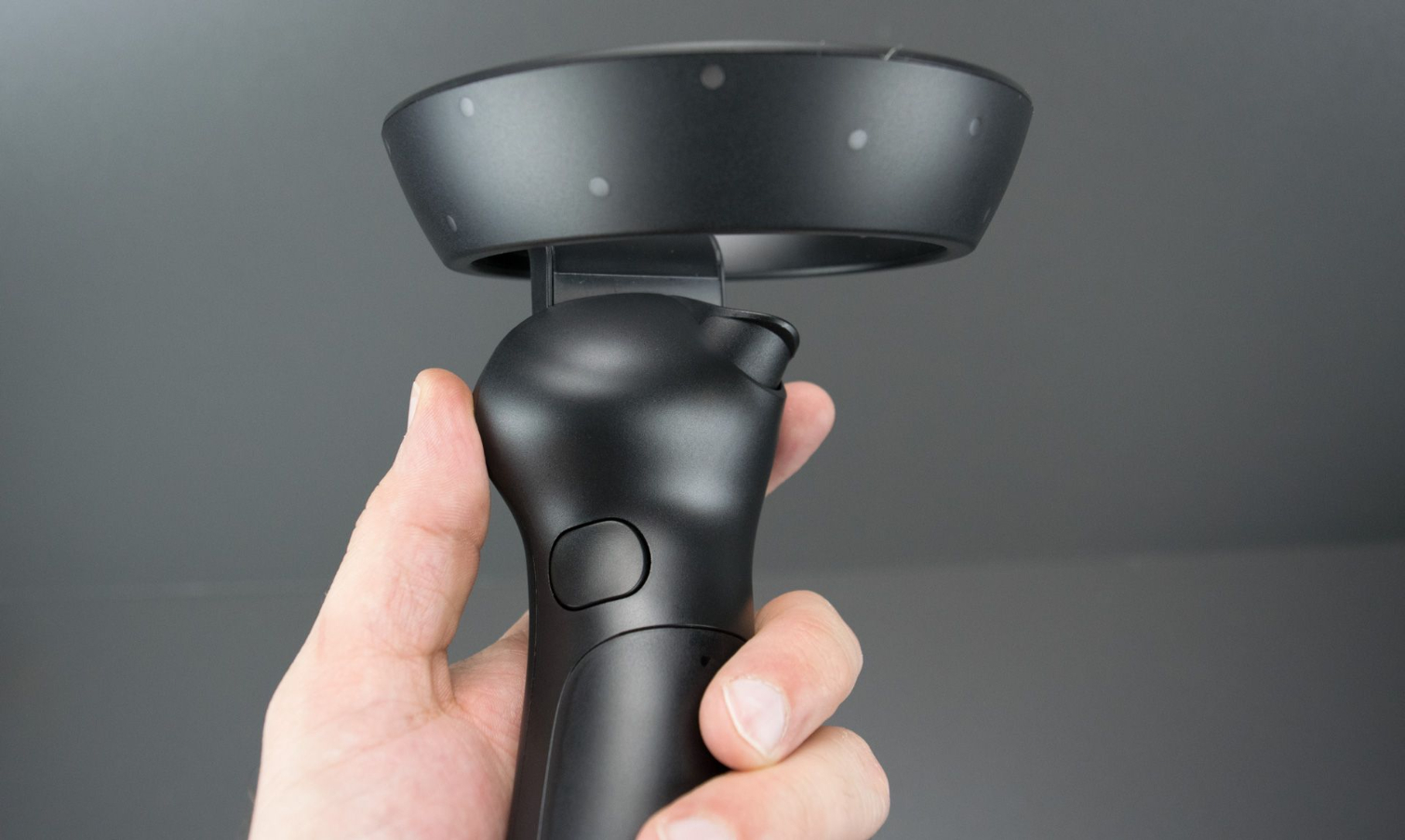
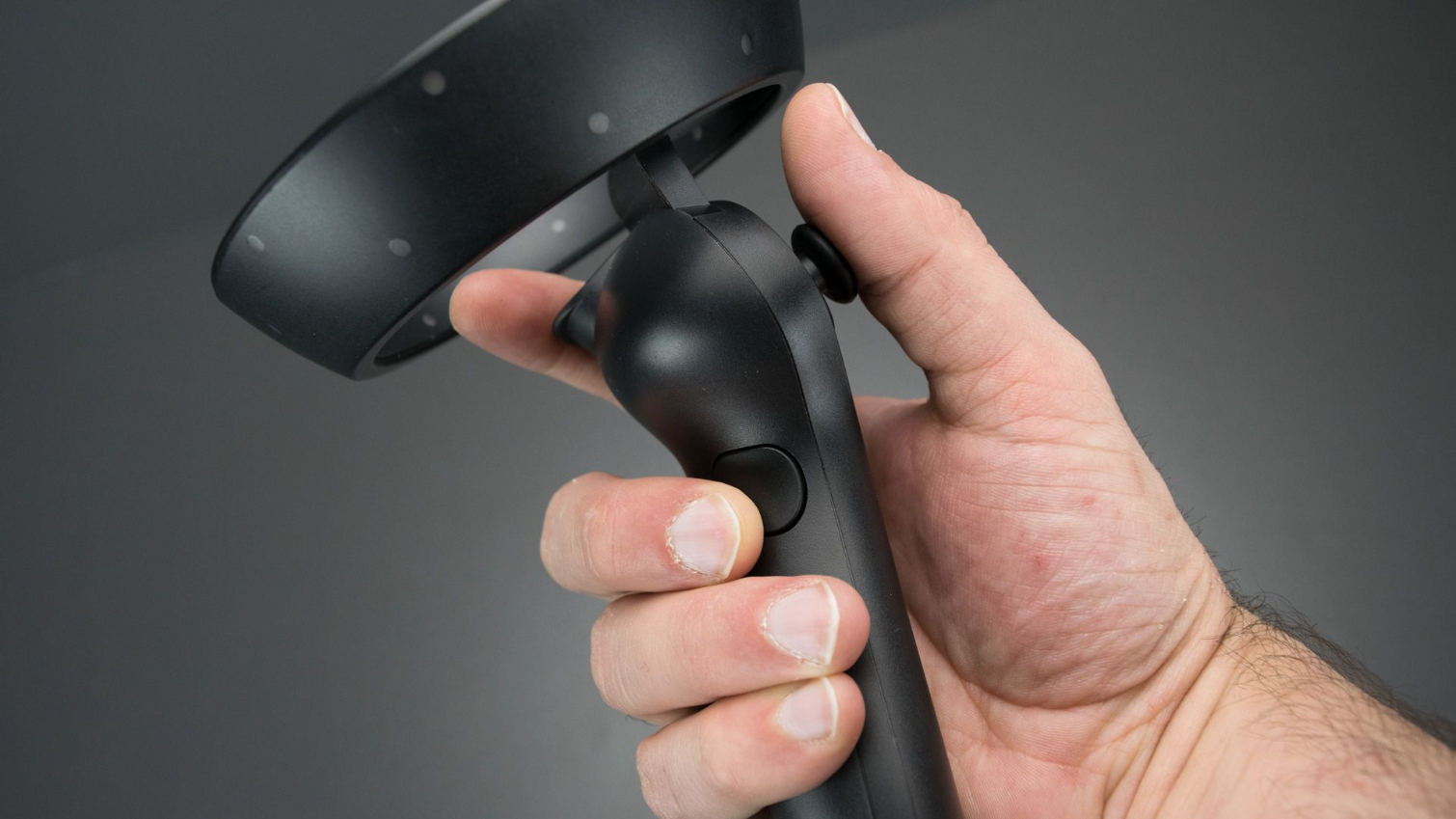
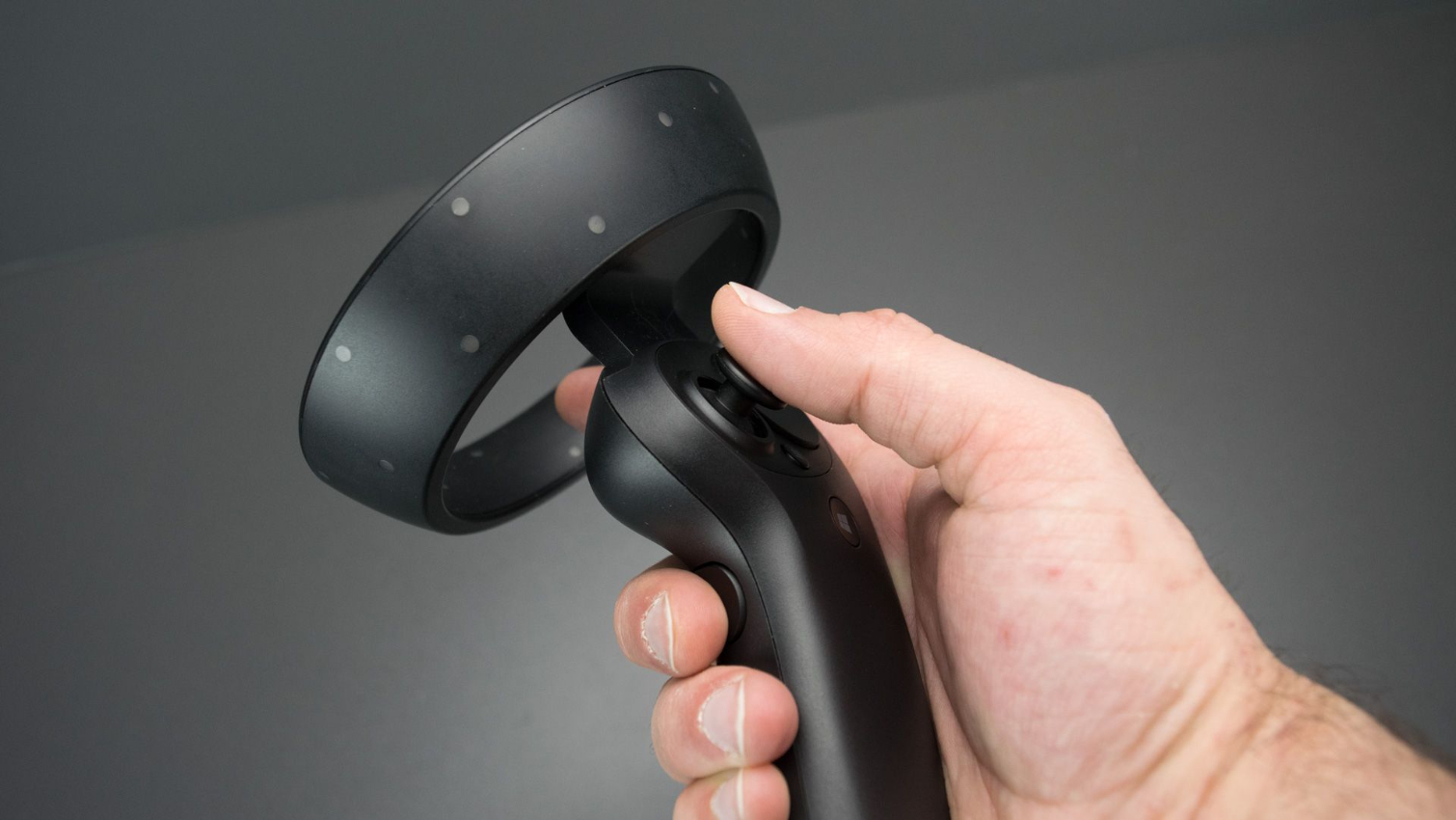

The one element of the controllers we could stand to see improved is the battery covers. Like the reference design, Samsung’s controllers house two AA batteries in the handle. And like in the reference design, the battery cover on the Samsung controllers is somewhat loose and feels like it could wear out prematurely.
Get Tom's Hardware's best news and in-depth reviews, straight to your inbox.
MORE: Best Virtual Reality Headsets
MORE: All Virtual Reality Content
MORE: Virtual Reality Basics
Current page: The Samsung HMD Odyssey Motion Controllers
Prev Page An Introduction To Windows Mixed Reality Next Page How We Tested The Samsung HMD OdysseyKevin Carbotte is a contributing writer for Tom's Hardware who primarily covers VR and AR hardware. He has been writing for us for more than four years.
-
daviddalke I use my glasses all the time with the Odyssey. The are big and Geeky with progressive lenses (+2.25 for farsightedness). Other than a bit of vertical fuzziness at the bottom due to the progressive lens, I have no issues using it.Reply -
daviddalke The article comments that if you wear glasses to move on. I wear my glasses all the time with my Odyssey. The are big and geeky and have +2.5 progressive lenses. Other than a bit of fuzziness at the bottom of the screen due to the my lenses I have a very enjoyable experience with the Odyssey. I hope Microsoft doesn't abandon their MR effort.Reply -
alextheblue "we would still lean toward an HTC Vive with a Deluxe Audio Head Strap for the most complete VR experience"Reply
Why? Is it the inferior Vive controllers? The sweet last-gen outside-in tracking? Displays? The extra $100 for the DAS? When you make a comment like that, it's nice to point out why. -
Evolution2001 Reply
Here's my reason why I prefer the Vive over the Odyssey.20843150 said:"we would still lean toward an HTC Vive with a Deluxe Audio Head Strap for the most complete VR experience"
Why? Is it the inferior Vive controllers? The sweet last-gen outside-in tracking? Displays? The extra $100 for the DAS? When you make a comment like that, it's nice to point out why.
http://www.tomshardware.com/forum/id-3664417/review-samsung-odyssey-htc-vive.html
-
Evolution2001 Reply
Kevin,20841634 said:Samsung HMD Odyssey Windows Mixed Reality Headset Review: MR Goes Premium : Read more
I believe there was a fairly glaring omission from your otherwise thorough review.
WMR requires Bluetooth 4.0. As BT is more prevalent on laptops than desktops, that might be a gotcha when people get their WMR unit, regardless of manufacturer & model.
"Cool! It's finally arrived!".... "Wait, WTF...I need a BT adapter??? GAHHH!"
Here's a couple of tips that I didn't note in my own review from my month+ spent with the Odyssey.
1) Before anyone purchases any WMR device, you should run Microsoft's WMR PC Check tool. It's a free download in MS' App Store. (HERE) If there's any "X" that it calls out as a problem, WMR will not work. Period.
2) This is the BT adapter that MS officially(?) endorses on their website. Link goes to product on Amazon.
3) I found the controller tracking to be very inconsistent with the Odyssey. In your gaming/testing, did you do much movement where the controllers needed to go to the outer stretches of your arms or behind your head (for games such as Space Pirate Trainer and Beat The Blitz)? My controllers with fully juiced batteries would lose sync which really detracts from the total immersion.
Also, you are correct about the battery cover. As I noted in my review, my grip on the controller was dislodging the battery cover.
4) If my understanding is correct, the controllers pair to your BT adapter. This potentially causes signal attenuation if your BT adapter is plugged into a rear USB port or is simply not always in line-of-sight with the controllers.
5) I too found the tether to be too short. So I ended up buying some extension cables which resolved the problem. Be aware, not all extension cables are created equal. For example, a 'standard' USB extension cable does not infer USB 3.0 compatibility. And WMR is very specific if you aren't plugged into a a USB 3.0 port. I thought maybe it was just power delivery, but I was initially using a powered USB 2.0 extension cord. No go. It has to be a USB 3.0-rated extension cable. Same thing with HDMI certifications.
So here's what I recommend for people looking to extend their playing area. (Obviously, I confirm these work with the WMR headsets, specifically the Odyssey)
- 6' HDMI extension cable- USB 3.0 extension cable- Any run of the mill USB 2.0 extension cable so get your BT adapter closer to the play area.
6) Lastly, with regards to the comparison of built-in audio on the Odyssey compared to the lack-of on the Vive... The Vive has the 1/8" headphone tap on it. A solid set of earbuds fill the need nicely. Their cable drapes over the back of your head and are never in the way. So people don't have to resort to placing big, over-the-ear headphones over the Vive's head strap. I will say that the AKGs on the Odyssey do work exceptionally well!
Again, a nice thorough review. I just wanted to help plug what I consider to be a few holes so the readers can avoid a lot of the delays and headaches that I initially dealt with.
And I also agree- especially given the Vive's price drop since the Vive Pro released- the Vive is still the overall HMD winner.
-
therealduckofdeath I don't see how the 6th point you list is a pro for the Vive, Evolution2001? Using ear-buds can be rather fatiguing when used for extended periods, both the fit and the type of sound you get when it's pumped at your ear drum in a tiny closed pressure chamber. They also create a lot more cable noise than any other option.Reply